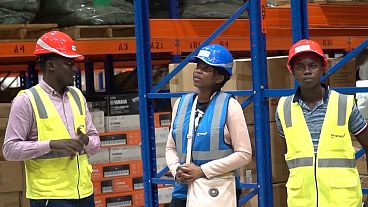By Pratima Desai
LONDON (Reuters) - Copper's price slide due to the escalating U.S.-China trade dispute suggests a deteriorating fundamental picture, but bubbling away in the background are supply side problems that are likely to lead to a tighter market.
Copper is used in the power and construction industries and is seen by investors as a gauge of economic health.
Benchmark copper prices on the London Metal Exchange, trading at around $5,850 a tonne, have tumbled nearly 9% this month.
For a graphic on copper prices, click https://tmsnrt.rs/2I8xVmf
The drop is largely due to potential for demand destruction in China, which accounts for nearly half of global copper consumption estimated at around 24 million tonnes this year.
However, disruptions in top producer Chile, political and power problems in Zambia and restrictions on scrap imports into China are expected to weigh on copper supplies in the second half of 2019.
"Deficits are going to be larger than people were expecting even two months ago," a fund manager focused on metals said. "You can see it already in the physical market."
In Chile, state-run miner Codelco could be facing a strike at its giant Chuquicamata mine, where three unions this week rejected a final offer of a new contract.
Codelco is the world's largest copper producer. It produced 1.678 million tonnes of copper at its own mines last year.
For a graphic on Chile copper output, click https://tmsnrt.rs/2We0msQ
"This year we're forecasting a refined metal deficit of about 270,000 tonnes," said BMO Capital Markets analyst Kash Kamal. "The tight concentrate market can be seen in treatment charges which on a spot basis are currently below $60 a tonne compared with $95 in December."
Miners pay treatment and refining charges to smelters to process their concentrate into refined metal.
For a graphic on Copper treatment charges, click https://tmsnrt.rs/2I7wTXs
Also on the radar is Chinese miner MMG's Las Bambas mine in Peru, where a road blockade by the local community after talks over compensation broke down is fuelling concern about the availability of high quality concentrate.
One of Peru's biggest mines, Las Bambas churns out about 400,000 tonnes of copper a year.
In Zambia, which produced 860,000 tonnes of copper last year, changes to mining taxes are expected to slash output by 100,000 tonnes this year.
Power in Zambia is also a focus.
"With the bulk of Zambia's power sourced from hydropower plants, the ongoing drought may lead to imminent load shedding lasting as long as the next six to nine months and potentially impacting copper production," Citi analyst Max Layton said.
For a graphic on Zambia rainfall, click https://tmsnrt.rs/2I96RmX
Analysts have pencilled in copper disruptions at around 5% this year or about 1.2 million tonnes.
But the risks of a higher number are significant and may mean a larger than expected deficit, which would have to be covered by draws on exchange stocks already on a downtrend.
Total stocks of copper in LME-approved warehouses stand at 212,450 tonnes, while those in warehouses monitored by the Shanghai Futures Exchange are at 172,266 tonnes.
For a graphic on copper stocks, click https://tmsnrt.rs/2Ibx8AU
Restrictions on scrap imports in China are also expected to contribute to shortages over the next few months.
"Even if demand is weak in China, it will have to import more concentrate and refined metal because of the scrap rules," the fund manager said.
For a graphic on China copper imports, click https://tmsnrt.rs/2Wi5FaU
(Reporting by Pratima Desai; editing by David Evans)



